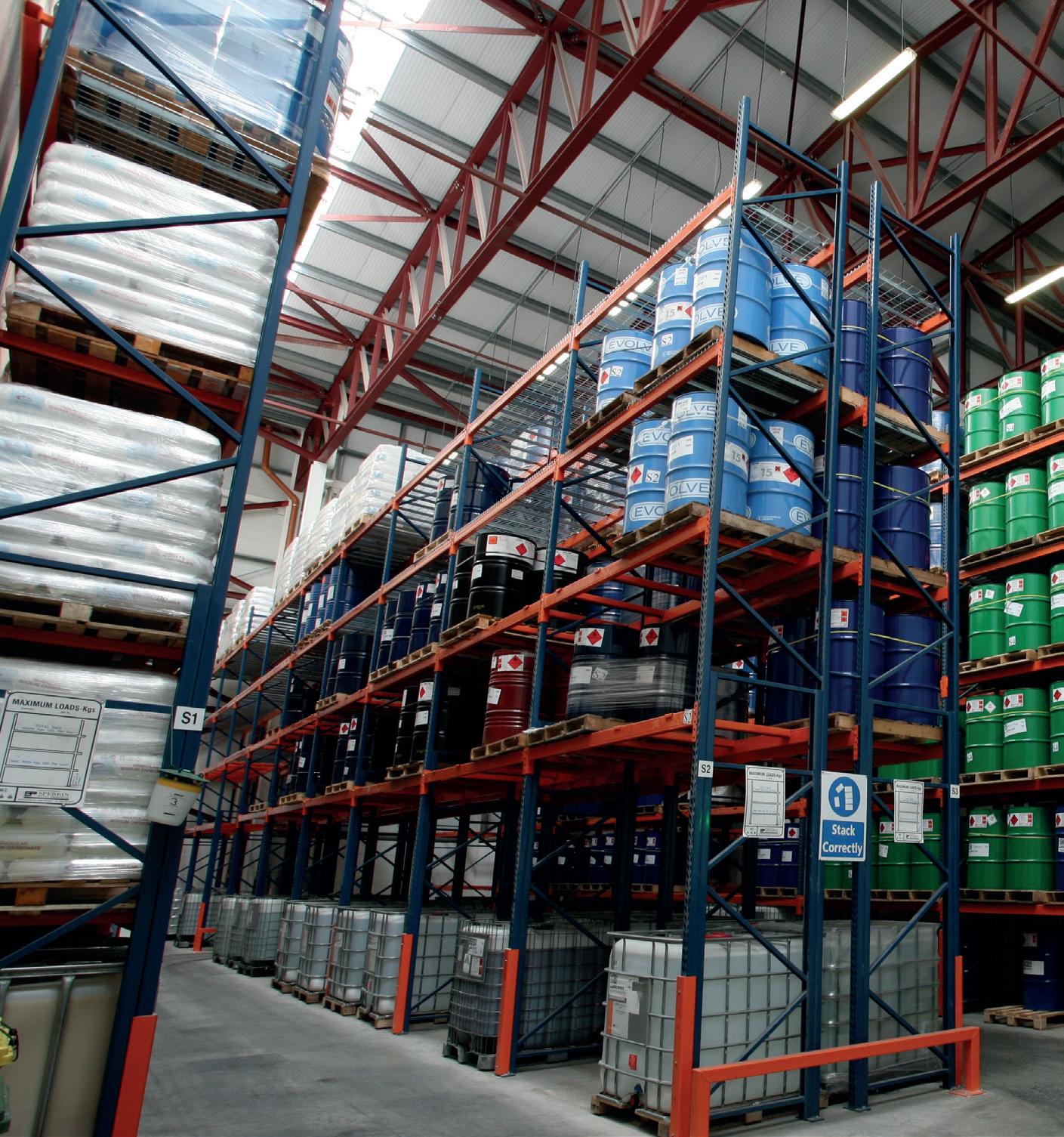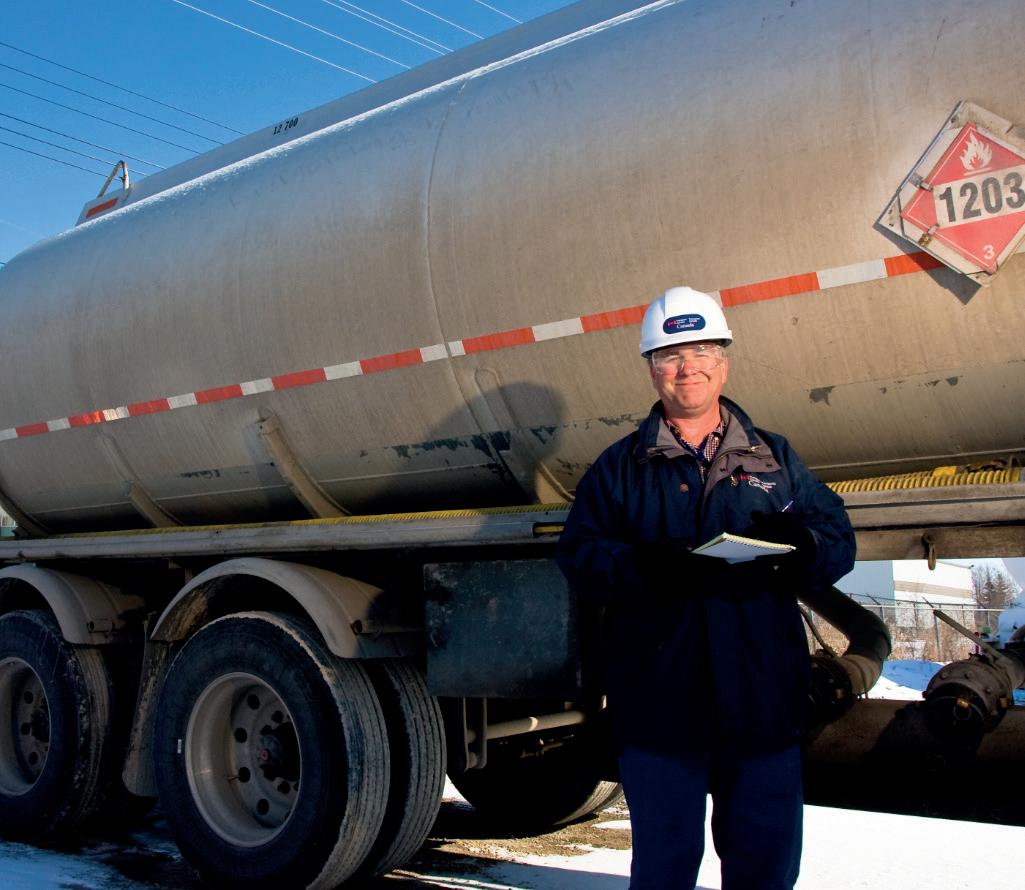
6 minute read
Canada publishes registration proposals
WHO GOES THERE?
FINANCIALS • TRANSPORT CANADA IS PLANNING TO SET UP A REGISTRATION SYSTEM SO THAT IT CAN HAVE A BETTER GRASP OF WHO IS DOING WHAT WITH DANGEROUS GOODS IN THE COUNTRY
TRANSPORT CANADA HAS published its proposals for the introduction of a registration system for companies and sites involved in the transport of dangerous goods. The proposals have been in development for several years, designed to address an issue first identified by an internal audit in 2006 – the lack of information available to Transport Canada on the number, location and identity of sites where dangerous goods are being handled.
Indeed, between 2009 and 2011, some 2,500 reportable on-site dangerous goods incidents were notified to Transport Canada; only 84 of those took place at a site included in Transport Canada’s oversight system – in other words, 96.6 per cent of the reported incidents occurred at places that were unknown to Transport Canada and therefore had not been inspected.
The issue was put into stark perspective as the result of a 2011 audit by the Office of the Commissioner of the Environment and Sustainable Development (CESD), which said that Transport Canada was unaware of who exactly was involved in the import, offering for transport, handling or transport of dangerous goods, did not have sufficient information to understand the risks of some products and operations, or the means to collect such information, and did not have the tools to assess risk and properly evaluate priorities for the risk-based oversight programme. This, CESD said, presented a public safety risk.
Since then, Transport Canada developed a national risk-based system to prioritise its oversight activities but, in 2020, CESD observed that the information available was outdated and incomplete, undermining the effectiveness of the programme.
WHAT’S THE PLAN? Having held informal consultations with industry, Transport Canada (TC) has now published its proposals in Canada Gazette Part I; they involve the amendment of the Transportation of Dangerous Goods (TDG) Regulations to require persons to register themselves and their ‘TDG Sites’ with a new online registration database administered by TC, and to provide data related to their transport of dangerous goods activities at those sites.
The aim of this process is to provide TC with a more comprehensive picture of activities involving dangerous goods taking place across the country, including at those sites of which it is currently unaware. Further, the registration database would support TC’s risk-based analyses and risk scoring, which would help TC to prioritise sites for inspection.
TC is proposing a limited and specific registration requirement, in order to address the objective for establishing the ‘where’, ‘what’ and ‘how much’ of dangerous goods in Canada. To start with, TC needed to define what it means by a ‘TDG Site’. A new definition will be inserted to Part 17 of the TDG Regulations to indicate that a Site is a place where dangerous goods are imported, offered for transport, handled or transported, but does not include a means of transport. In cases where a building or premises are contained within a larger facility, such as a port or airport, the Site would be the building or premises itself and not the larger facility, unless the Site and the facility are the same.
WHAT’S A SITE? For marine transport, the definition of Site includes locations where dangerous goods are being loaded and unloaded but would not include a warehouse or a vessel, even if docked at the port. A common-use terminal would be registered as a Site. For ports where there is no terminal, the port would be registered as the Site.
In the context of air transportation, since dangerous goods are loaded onto and unloaded from aircraft at a company’s respective common-use cargo terminal, the location that would be registered would be associated with the cargo terminal. For smaller airports with no distinct cargo terminal, the airport would be registered as a Site. In these cases, any road vehicle (such as aircraft refuellers) or aircraft sitting at the airport would not be considered as Sites. In addition, warehouses storing dangerous goods to be used by the airport would not have to be registered as Sites as this type of storage would not be considered as ‘in transport’ as per the TDG Regulations.
For rail transport, Sites would include any rail terminal that receives dangerous goods to be loaded on a train as well as any Site where dangerous goods are offloaded from a train and transferred to another means of transport. Sites would also include rail yards where rail cars are coupled into a train. Warehouses where dangerous goods are stored (not in transport) and sidetracks do not fall under the scope of Site.
There will be a new obligation on consignors, who would have to register locations where dangerous goods are prepared for and/or offered for transport. For the oil and gas industry, Sites would be the terminals, refineries and distribution centres where dangerous goods activities are conducted with the intent of being transported. Extraction premises, such as wells and well pads, and retail premises, such as gas stations, are exempted from the regulations.
The registration requirement for each site includes location and contact details, including the name of a point of contact, the type of activity taking place, the classes and divisions of all dangerous goods involved, and the mode(s) of transport involved. In addition, for higher risk dangerous goods, sites will also have to register the relevant UN number(s), Emergency Response Assistance Plan (ERAP) number, and the quantity and number of consignments involved in the previous year. All information will have to be updated or confirmed once each year.
GETTING OUT There are a number of exemptions proposed. Those that handle dangerous goods under the Special Cases listed in Part 1 of the TDG Regulations (other than 1.16 and 1.22) or those dangerous goods exempted under a special provision in Schedule 2 are not in scope, nor are those handling selected lower risk dangerous goods, such as retail stores, mail services and courier companies. Also out of scope are those handling dangerous goods in cross-border operations that do not operate a TDG Site in Canada, including foreign carriers, as well as self-employed truck owner-operators.
The proposals were published on 25 June and there is a 70-day consultation period ending on 3 September 2022. After that, TC will review comments made with the aim of publishing its final rule in Canada Gazette Part II in the first half of 2023, once the database itself is completed and fully accessible. After the entry-into-force of the new requirements, existing sites will have one year to complete their registration.
In the meantime, TC plans to conduct training on the new requirements to its TDG inspectors and provincial/territorial inspectors before the amendments come into force. Once they are enforcing the new provisions, it is likely a graduated approach will be taken, with non-compliant sites being given time to complete their registration and, after that, subject to fines of up to C$1,000.
TRANSPORT CANADA IS AIMING TO PLUG A KNOWLEDGE
GAP IN ITS ABIITY TO EFFECTIVELY INSPECT AND MONITOR
THE TRANSPORT AND HANDLING OF DANGEROUS GOODS
ACROSS ITS TERRITORY











